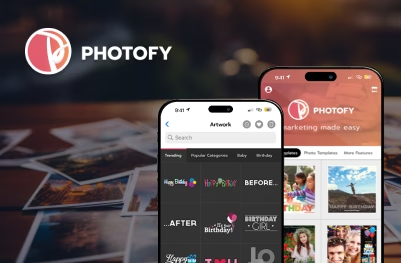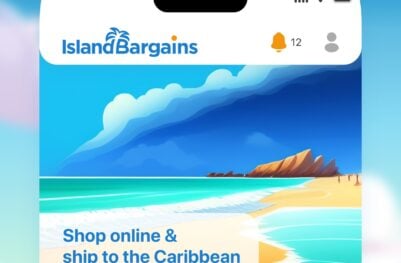- Developers
- Developer Blog
- Blockchain Development
- How to Build a Blockchain Social Media Platform for Bloggers?
profile

By Aran Davies
Verified Expert
9 years of experience
Aran Davies is a full-stack software development engineer and tech writer with experience in Web and Mobile technologies. He is a tech nomad and has seen it all.
Interested in building a blockchain social media platform for bloggers? Is there a blockchain social media platform? How to implement blockchain in social media?
This is a fascinating topic we will discuss further in this article and answer all the most popular and exciting questions about how to build and launch a blockchain social media platform in 2025.
In this article
- Blockchain Social Media Platform
- Examples of Blockchain Social Media Networks
- Different Approaches to Developing a Social Media Platform on Blockchain
- Blockchain Social Media Platform Development Using the Sola Platform
- Create a Blockchain-Based Rewards Platform Using the “Steem.io” APIs
- Blockchain Social Media Platform Development Using Loom Network SDK
- Frequently Asked Questions on Blockchain Social Media Platforms
There are 5.07 billion social media users globally. With such an audience, the idea to build your own social media platform seems wise. Blockchain-based social networks can enhance privacy, user control, and security.
However, developing a blockchain social network solution comes with challenges. If you need assistance of a professional software development company with your blockchain social network app, you can contact DevTeam.Space. The company has many successful blockchain solutions in its portfolio and can help you build yours.
Blockchain Social Media Platform

You can create social media content that engages viewers, and you get paid for it! This is no longer a secret.
However, why let the social media sites that host your posts take the lion’s share of the profits? All you have to do is to create your own platform using blockchain.
Sounds too good to be true? Companies are already doing it!
Blockchain allows decentralization, and with it comes greater privacy and freedom of speech, hence Facebook or Google can’t control user-generated content.
The technology enables immutable records, so when you have established your ownership over user content, no one can change that. Blockchain also allows the building of new business models using smart contracts and social media DApps.
So, in summary, a blockchain-based platform that rewards users is where your users can create content to engage viewers without censorship. Finally, users can be automatically paid commissions on the money that their content makes via digital assets such as cryptocurrency.
Blockchain-Based Rewards Platform Features
As you can well imagine, disrupting a platform as big as Facebook isn‘t easy! A blockchain social media site must have the following features to become a viable alternative:
- Content creators producing engaging content must get rewards, and it should be proportional to the engagement their content creates.
- Currently, if you publish a great article on LinkedIn, you get no reward. LinkedIn earns from ads, though.
- Developers that bring improvement to the platform must receive rewards for their efforts.
- Censorship-resistant: Repressive regimes routinely deny their citizens the right to access content that the regime considers sensitive. A blockchain-powered social media must resist such censorship.
- Vetting of content in a decentralized manner to ensure authenticity: The platform must enable users with subject matter expertise to certify if a piece of content is genuine.
- Fake news is a problem in traditional social media platforms with central proprietary authority, and decentralized social networks must empower their community to prevent this.
- Users must be in control of their personal data to prevent Cambridge Analytica-like scandals.
- Traditional social media’s popularity is rising every day; however, there are concerns related to user data and privacy breaches. Blockchain social media privacy will pave the way for the emergence of new, much more ethical, and user-friendly social media networks that put the protection of sensitive personal information first.
- Digital rights management: Content creators should be able to protect their rights over their content.
Examples of Blockchain Social Media Networks
Blockchain technology startups have already set the ball rolling. The following are a few examples of decentralized social media platforms. It‘s not an exhaustive list. However, these will give you an idea of what features you want to build in your blockchain social media platforms.

Get a complimentary discovery call and a free ballpark estimate for your project
Trusted by 100x of startups and companies like
Sapien decentralized social news platform/ blockchain network
Sapien is an Ethereum blockchain-based decentralized social news platform. They meet the criteria I described above and provide the following features:
- Public or private browsing;
- Subscription to branches according to interest;
- Users can add friends, create groups, post content, and comment on content that others post;
- Chat facility;
- Store data with encryption, including that of the chat;
- Users can customize their settings.
They use the SPN crypto token.
Steemit blockchain blogging website
Steemit is an American blockchain or blockchain-based blogging and social media website.
What is Steem blockchain?
It’s a social blockchain that powers Steemit, an incentive-based, peer-to-peer social media network.
Their specialty is enabling content publishers to monetize their content so that they can get rewards.
It‘s a points-based system; however, the points here are crypto tokens that are tradable in crypto markets. Users get their tokens in any of the following ways:
- Posting content;
- Voting and curating others‘ content;
- Purchase STEEM tokens by simply exchanging their Bitcoin or Ether in several crypto exchanges;
- Vesting their STEEM tokens for powering up the network and earning fees from that.
Users who spend significant effort to create engaging content and in community building can earn lots of profits via smart media tokens.
Any good blockchain-based social platform implements a user verification process before allowing users to open accounts.
Sola Platform/ blockchain social platform
Sola is the next-generation decentralized social platform powered by Ethereum Blockchain.
Unlike many social media platforms, “Sola Platform” doesn‘t use a ’Follow‘ other users concept.
Instead, this social networking platform uses a combination of blockchain and Artificial Intelligence (AI) to make your content reach as wide a user base as possible. The AI component was released in Q3 2018.
This blockchain social media provider gets its revenue from ads, user payments, and partnerships, which they share with their users. They use their SOL crypto token. The decentralized blockchain rules out censoring and security risks.
Sola has Android and iOS mobile apps, as well as a web app.
Indorse professional network/ blockchain network
Indorse is a professional skills validation platform built on the Ethereum blockchain.
Indorse is like LinkedIn, however, it‘s blockchain-based professional social media and therefore, it’s decentralized. Users need to submit proof of their skills to verify their skills and qualifications.
Indorse uses a decentralized verification process to endorse skills. Once verified, the user can start taking up work and earning.
It‘s built on the Ethereum platform and uses the IND token to reward users for their activities on the network. Indorse also uses modern protocols like InterPlanetary File System (IPFS), BigchainDB, etc.
Different Approaches to Developing a Social Media Platform on Blockchain

I will describe three approaches to help you build blockchain social media networks. These are as follows:
- Develop using the Sola platform and its APIs.
- Use Steem.io APIs to develop a decentralized social media platform. Please note that some of their APIs are still under development, and you need to hand-code those functions.
- Use Loom Network SDK to build decentralized social media.
In the 1st and 2nd approaches, you need to design and develop the UI/UX for your app from scratch.
Blockchain Social Media Platform Development Using the Sola Platform
In this approach, you need to get SOL tokens and set up your user credentials in the Sola platform. You need to start in the Sola developer portal.
You need to register your app, for which the Sola portal will provide you an OAuth App ID and a private key for each of your apps.
Please read their platform usage policies in detail and pay special attention to their policies related to plagiarism, harassment, user data protection, data storage, etc.
Sola platform allows you to write apps that read user data or write objects. They call these ’read‘ and ’write‘ scopes, respectively. However, apps can‘t access user chats or money-related requests.
Hire expert software developers for your next project
1,200 top developers
us since 2016
The methods you use in your apps all require authorization, and you need to pass session tokens for this. You can pass request parameters as JSON or as GET parameters in the URL. Read more about this on their API general concepts page.
Sola APIs will always return responses in JSON format, and they use industry-standard HTTP response codes. Their API documentation lists the error codes and you can get a list of these on their API “error codes” page.
I will now describe a few API categories in detail, with the objective of explaining how they have categorized their APIs.
Once you study a few of them, you will see the pattern, and then you can take a deep dive into their entire API library to find the ones you need.
Media upload
Sola APIs don’t support external media links, and you need to upload all your media content to their CDN repository upfront.
Check out the required commands on their API page for media uploads. Sola also uses Websockets to manage real-time events and notifications.
Authentication
You can achieve OAuth authentication using any of the following options:
- By supplying client credentials, where you need to pass the app ID, app secret key, and app scope (e.g. ’read‘, or ’write‘) security measures.
- By providing an access token, where you need to provide an app ID and app scope.
Consult the API page for authentication of command formats.
User functions
As a next step, you need to enable the user-related aspects of your app, e.g., user settings, user profile update, etc. Sola provides the following APIs for this:
- GET option for user settings, user metadata, user profile, and user profile-by-slug;
- Update the user profile and user settings using the PUT option.
Read their API page for user functions, code, parameters, and response code details.
Channels and their prioritization by users
Your decentralized social network app needs to show channels that users consider popular and have prioritized. The Sola platform provides the following APIs for this purpose:
- GET:
- Users who prioritized a channel;
- List of prioritized channels;
- Prioritized user list;
- All priorities list;
- Users that have prioritized a particular user.
- PUT:
- Prioritize channels;
- Prioritize users.
- DELETE:
- User priorities;
- Channel priorities.
Read their API page for priorities to get a description of the kinds of APIs they have.
By now, you have seen how the Sola project team has categorized their APIs for various social media app functions. I recommend that you study in detail the other APIs they have, which are as follows:
- Blocks;
- Mutes;
- Alerts;
- Feed;
- Posts and drafts;
- Topics;
- Endorses and skips;
- Subscriptions;
- Comments;
- Polls;
- Channels;
- Activities;
- Popups.
They have created comprehensive API documentation. I recommend you go through it to understand how you will make the API calls for services that your app will use.
Create a Blockchain-Based Rewards Platform Using the “Steem.io” APIs
This approach might be harder than the first one because lots of “Steem.io” APIs are still under development. In this approach, you will develop your decentralized social media network on the Steem blockchain.
Select your development library
An advantage of “Steem.io” APIs is that they give you the choice of popular programming languages.
You may have JavaScript or Python developers on your team, especially since these are programming languages of choice for many. With Steem, you can develop using these languages.
Additionally, you have “Steemit.com” endpoints to get common data, e.g., user profile and post JSON data.
They also have an ” SBDS ” tool to query the Steem blockchain data. Read more about this on their Quickstart library page.
Choose blockchain node
If your application for decentralized social media networks intends to interface directly with the Steem blockchain, then it needs to connect to a “Steemd” node. You can choose from a list of public API nodes they provide or run your own node.
You will need to synchronize with the blockchain. Check out their Quickstart library page for more details.
Using Steem testnet
Using “Steem.io” APIs to build your blockchain social networks is harder because you need to set up their Steem testnet.
To do this, you need at least some system administration skills, besides you need to understand the concept of containers like Docker. However, if you follow their GitHub build procedure for testnet, it should help!
Consult “Steem.io” tutorials
Assuming you have JavaScript, Python, or Ruby developers on your team, you should go through the appropriate tutorial the “Steem.io” project offers.
Hire expert software developers for your next project
For each language, they have categorized their tutorials by different social media platform functions, e.g. blog feed, get post comments, submit comment reply, etc.
Following are their tutorials; consider exploring them in detail:
“Steem.io” services
“Steem.io” project offers various services, as follows:
- “SteemConnect”: Enables secure connection via 3rd party app.
- “ImageHoster”: This is an image hosting service that Steem provides. If you have used an image from a 3rd party service, and if it goes down, thanks to “ImageHoster,” you will still have the image.
“Steem.io” APPBASE APIs
Note that many “Steem.io” APIs are currently under development. When complete, the APPBASE APIs will include the following:
- Account-by-Key;
- Broadcast-Ops-Comments;
- Account history;
- Database;
- “Follow”;
- “JSONrpc”;
- Market-History;
- Network Broadcast;
- Tags;
- Witness;
- Block;
- Broadcast-ops.
However, to enable your blockchain developers to still work with the “Steem.io” APIs, the project team has created a “Condenser API.” While they develop their remaining APPBASE APIs, you can continue to code your app by making the API calls to refer to the “Condenser API.”
Blockchain Social Media Platform Development Using Loom Network SDK
Loom Network, a blockchain start-up, has developed ’Software Development Kits’ (SDKs) for several use cases, e.g.:
- You can build your Ethereum DApps on sidechains attached to the Ethereum blockchain network. These are called DAppChains, and you can customize them to fit your app’s requirements.
- E.g., if your DApp requires lower-level security features, you can use the ’Proof of Stake‘ (PoS) consensus algorithm. This can help in scaling your DApp. Read more about it in “How to Scale an Ethereum Dapp.”
- You can develop a blockchain-based game using their ’Unity SDK‘.
They also have created a sample social media app for demonstration purposes, which has limited features.
You need to take the following steps to implement this app for decentralized networks and run it:
- Set up and run your own DappChain.
- Run ElasticSearch and Redis. You need a fast database service; hence, you need this.
- You now need to run a service called “Indexer.” It gets all events from smart contracts and builds a message queue. This will feed ElasticSearch and Redis.
- For your front end, you need a web server, and now you need to start it.
- Now, you can run this app. The smart contract for the sample app is in the Loom Network Solidity Social Network sample GitHub repository. You can build your own by taking ideas from it.
To summarize, I have described 3 approaches that can be used to build a blockchain-based social network. These are:
- The first approach uses the Sola platform, which is the most workable.
- You must build some system administration and Docker container skills in your team to use the “Steem.io” API approach. Hence, it is more complex.
- The approach using the Loom Network SDK for a decentralized network has a simple app already built in. Depending on the complexity you need in your app, you will likely need to code several more contracts. You will likely have to code more front-end UI/UX components.
The cost of building a blockchain-based social network platform will vary depending on the complexity you plan to introduce.
How blockchain is used will also make a big difference, i.e. simple integration of blockchain into centralized systems or complete reliance on the entire database and application, etc. It will also depend on the development approach that you take.
For example, to access some of the platforms, you will need to buy their tokens. The “Steem.io” approach is likely to be the costliest because of the additional skills you need to have in your team. Your cost will also depend on the manpower resources.
Planning to Build a Blockchain Social Media Platform?
If you are building any form of blockchain-based social media platform or any other blockchain technology such as NFTS or cryptocurrencies, then you will need to make sure you have the expertise and experience needed to ensure your product is a success.
Since the stakes are much higher with blockchain, where once data is written to the blockchain, it is very hard to change; blockchain developers must get the code right the first time.
DevTeam.Space has years of experience creating top-class blockchain solutions. Our community of expert developers and dev teams is designed to fit easily into your existing team to help you quickly onboard and offboard the skills and expertise you need.
Why not take a moment to fill out our project specification form to see how we can help you?
Frequently Asked Questions on Blockchain Social Media Platforms
This is a social media platform that operates on a blockchain. It is a DLT or decentralized ledger technology and, therefore, has no centralized authority. The data is processed and distributed on a network of remote computers, which ensures better data security. An example includes DTube.
The answer to this question really depends on the type of solution that you wish to create. A very basic blockchain solution can cost as little as a few thousand dollars, while a complete blockchain social media site can run into hundreds of thousands.
If you are looking for top blockchain developers, then you only need to submit a project specification to DevTeam.Space. The company will then match you with the best blockchain developers who have been vetted for excellence.
In the last year alone, we have helped create a cryptocurrency, helped blockchain companies write their white papers for their ICO, and developed numerous blockchain use cases for a variety of ecosystems.
Initially, Bitcoin, the application that pioneered blockchain technology was open source. While a huge number of blockchain systems remain so, more and more companies are developing their own apps which are privately owned.
Related Blockchain Development Articles
Learn more about blockchain development from our expert articles:
- Where to Hire Blockchain Developers in 2025
- How to Interview and Hire Blockchain Developers
- What is Blockchain Used for?
- What technologies do blockchain developers use?
- What Are the Best Blockchain Network Hosts in 2025?
- How to Conduct Ethereum App Development
- How Blockchain Technology Ensures Network Security
- What are smart contracts in Blockchain Networks?
- How to Choose Smart Contract Platforms?
- What is a Blockchain Smart Contract Audit?
- How To Build Real Estate Blockchain Projects
- How to Build a Blockchain Music App?
- How to Build DApp Games Like CryptoKitties?
- How to Implement Blockchain in Education Sector?

Alexey Semeney
Founder of DevTeam.Space
Hire Alexey and His Team To Build a Great Product
Alexey is the founder of DevTeam.Space. He is award nominee among TOP 26 mentors of FI's 'Global Startup Mentor Awards'.
Alexey is Expert Startup Review Panel member and advices the oldest angel investment group in Silicon Valley on products investment deals.


